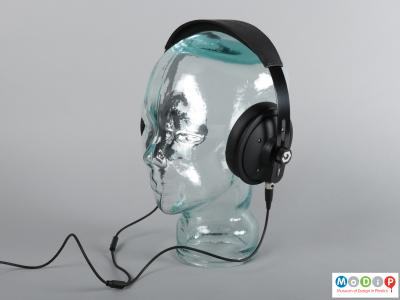The concept of Design for Disassembly was first introduced in the early 1990s. It advocates for the environment by recommending products be designed in such a way that they can be easily taken apart at the end of their useful life, with parts then either reused or recycled. In practice this could mean designing with as few materials as possible or using non-permanent fastenings, and these considerations also provide the possibility for self-assembly and repair.
The Myelin bicycle helmet (1) has been engineered to be deconstructed and is made using 50% recycled plastics materials. Built with as few parts as possible, fasteners avoid the use of adhesives, interlocking parts hold each other securely in place, and the chin strap runs through the entire helmet, removing the need for separate anchored sections.
Dutch company Gerrard Street, now renamed Repeat Audio, was set up in 2015 to produce a modular headphone (2) with parts that could be easily replaced and upgraded. Offered through a subscription service, the headphones are designed to be sent through the post for easy assembly at home. As individual parts get worn or broken, customers can return the obsolete components for replacement, free of charge, with 85% of this e-waste being either reused or recycled. This circular design model allows the company to maintain full control over production materials because it retains ownership of the product. It also provides the incentive to produce durable headphones in order to maximise income through extending use cycles. The pair on display here are refurbished.
Using glue and other bonding elements to cement shoe components together typically causes problems for recycling and usually results in the entire shoe being shredded, an energy-intensive process with limited application for the recyclate. Released in 2022, the Nike ISPA Link trainers (3) require no glue in their construction but instead have modular parts that are held together through tension. The single material, thermoplastic polyurethane (TPU), sole has a series of pegs that slot into openings in the recycled polyester upper. This enables the shoes to be easily disassembled at end-of-life to replace worn parts and recycle materials.



